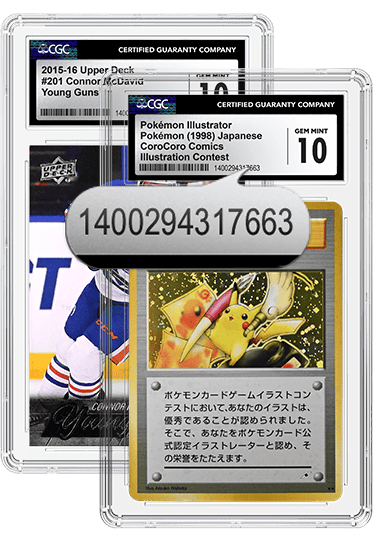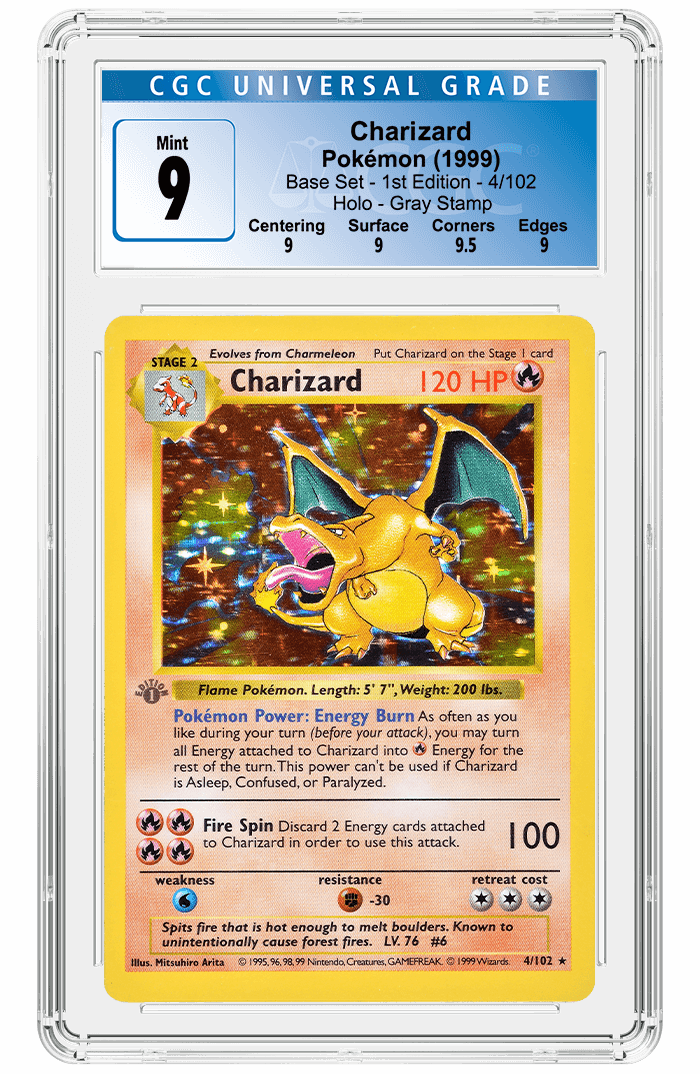CGC Trading Cards Goes Back in Time to the Very Beginning of Magic
Posted on 9/17/2020
CGC Trading Cards has graded some of the earliest Magic: The Gathering cards ever produced. These “playtest” cards tell the story of Magic’s earliest days, when the rules were still being written, and players were developing the strategies that ordained the game’s most powerful cards. Let’s go back to the very beginning of Magic.
 |
 |
| A playtest Blessing card from the Gamma phase and the version from the Alpha set. Click images to enlarge. |
|
Magic: The Gathering was released in late 1993, but its first concepts date far before then. Richard Garfield, the creator of Magic, was enamored by games at an early age, and he embarked on designing his own games from an early age as well.
One of these games was “Five Magics,” which relied on the power of the land to bring forth spells and creatures. Years later, when Peter Adkinson, founder of Wizards of the Coast (WOTC), asked Richard to develop a quick, portable game that could be played while waiting at Dungeons and Dragons conventions, he drew heavily upon Five Magics. However, the fundamental trading card gameplay concept was, as Richard described, a “eureka moment,” which occurred while he was hiking to Multnomah Falls near Portland, Oregon.
The very first Magic cards ever produced were playtest cards that Richard used privately to determine the proper gameplay. Once he felt that he had a suitable selection of cards, he created a hand-drawn 120 card deck, known as the Alpha playtest cards. These are not to be confused with the first printing of the Limited Edition set in 1993, also referred to as Alpha.
To play, Richard devised that the 120 cards would be split into two decks, from which a pair of players would continuously dual. The decks would then morph as players wagered a single card ante prior to play, with the victor claiming those cards permanently.
 |
 TB20200915140753230.jpg) |
| A playtest Merfolk card from the Gamma phase and the version from the Alpha set. Click images to enlarge. |
|
The first game of Magic played by two people was between Richard, of course, and Barry Reich. Barry was a fellow collegiate at the University of Pennsylvania, the school that would become the incubator for Magic. Richard and Barry took the homemade deck to one of the university’s few air conditioned rooms to play, and play they did until the sun came up.
From there, Richard was off to the next stage of playtesting, which would include Barry and several others. The easiest place for him to find potential playtesters was the U-Penn math department, which in turn led him to recruit members of the bridge club.
The next round of playtesting was the Beta phase. This time, a few thousand cards were made on thick paper with the color varying between different iterations. Now, the collectible and trading aspects of the game were immediately apparent, as Richard intended. The cards distributed to the players were their personal collections from which to build their decks.
The playtesters quickly identified strategies and card power levels and, through trading, some quite powerful combinations were discovered. Indeed, some of Magic’s most iconic and powerful cards were introduced during this Beta phase, including the Power Nine, which are the most prized regular set cards in Magic history.
The Beta phase card pool contained the three basic rarity levels familiar to most Magic aficionados: common, uncommon and rare. If a card was rare during playtesting, it meant that no more than five or six copies were produced. Broken decks full of Black Lotuses simply could not be assembled, and thus these cards made it to the Limited Edition set in 1993.
 |
 TB20200915140820058.jpg) |
| A playtest Time Walk card from the Gamma phase and the version from the Alpha set. Click images to enlarge. |
|
The Gamma playtest phase then followed, and the number of different cards doubled. Countless iconic cards that would be included in Magic’s official release originated in this phase, and the Gamma cards are some of the best-documented, as the original sheet placement is known to collectors.
The cards are very uniform, with only some annotations and a league stamp being the major varieties, although they are all extremely rare today. In fact, many of the Gamma cards from the rare sheets are simply unknown in collector hands, and the population for uncommon and common cards can mostly be counted on one hand for each individual card name.
Compared to the previous Beta cards, Gamma cards are much more aesthetically pleasing. The Beta cards are largely without any illustration, while Gamma cards are fully illustrated with clip art (mostly borrowed from Dungeons and Dragons manuals) or hand-drawn illustrations. A famous image found on the card “Goblins” is simply Richard’s face pressed against a copy machine.
Finally, we come to 1993 and the very first public release of Magic, which was termed Limited Edition internally but is now universally accepted as the Alpha set. The printing comprised 2.6 million cards with 1,100 copies of each of the 116 rare cards — a magnificently small number for collectors of the most coveted set in the game. The next printing of 7.8 million cards is now known as the Beta set, with 3,300 copies produced of each rare card.
 |
 TB20200915140846852.jpg) |
| A playtest Lightening Bolt card from the Gamma phase and the version from the Alpha set. Click images to enlarge. |
|
Alpha and Beta together were originally intended to be the same Limited Edition set with players unable to tell these printings apart. However, during production of the two print runs, an important process was slightly different between the two — the radius of the rounded corners. Although many other subtle differences are known by collectors, the discrepancy between the Alpha and Beta corners is obvious.
Corners on subsequent sets would be modeled after the Beta-style corners, which proved unfortunate for the Alpha cards in Magic’s early history. With the corners being quite noticeably different, they stood out within a deck and could be marked. This caused most tournament organizers to ban Alpha cards from competitive play, which made them trade for less than their Beta counterparts. Eventually, collectors and the advent of opaque gaming sleeves brought Alpha cards back in front value-wise.
In another behind-the-scenes twist, even after the master card files for the Limited Edition set had been sent to the printer, Richard intended that future Magic sets would not be combinable with older sets. This would have been done by carrying over a few popular cards, adding many new ones and featuring a different back design to differentiate subsequent sets.
Fortunately, with a last-minute decision prior to the first expansion — Arabian Nights — it was decided that the backs would remain the same for all future releases.
Stay Informed
Want news like this delivered to your inbox once a month? Subscribe to the free CGC eNewsletter today!

